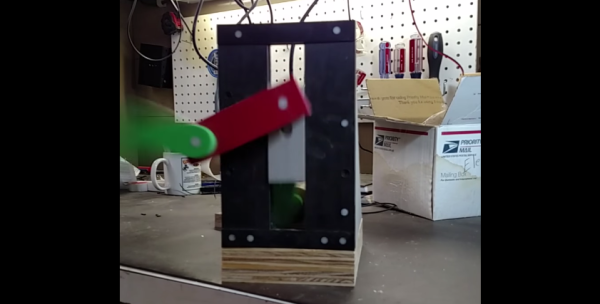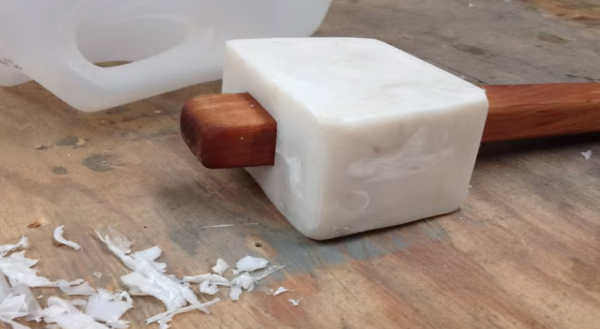If you’ve never seen a double pendulum before, it’s basically just a pendulum with another pendulum attached to the end. You might not think that’s anything special, but these devices can exhibit extremely chaotic behavior if enough energy is put into the system. The result is often a display that draws attention. [David] wanted to build his own double pendulum display, but he wanted to make it drive itself. The result is a powered double pendulum.
There aren’t many build details here, but the device is simple enough that we can deduce how it works from the demonstration video. It’s broken into two main pieces; the frame and the pendulum. The frame appears to be made mostly from wood. The front plate is made of three layers sandwiched together. A slot is cut out of the middle to allow a rail to slide up and down linearly. The rail is designed in such a way that it fits between the outer layers of the front plate like a track.
The pendulum is attached to the linear rail. The rail moves up and down and puts energy into the pendulum. This causes the pendulum to actually move and generate the chaotic behavior. The rail slides up and down thanks to an electric motor mounted to the base. The mechanics work similar to a piston on a crankshaft. The motor looks as though it is mounted to a wooden bracket that was cut with precision on a laser cutter. The final product works well, though it is a bit noisy. We also wonder if the system would be even more fun to watch if the rotation of the motor had an element of randomness added to it. Or he could always attach a paint sprayer to the end. Continue reading “Powered Double Pendulum Is A Chaotic Display”














